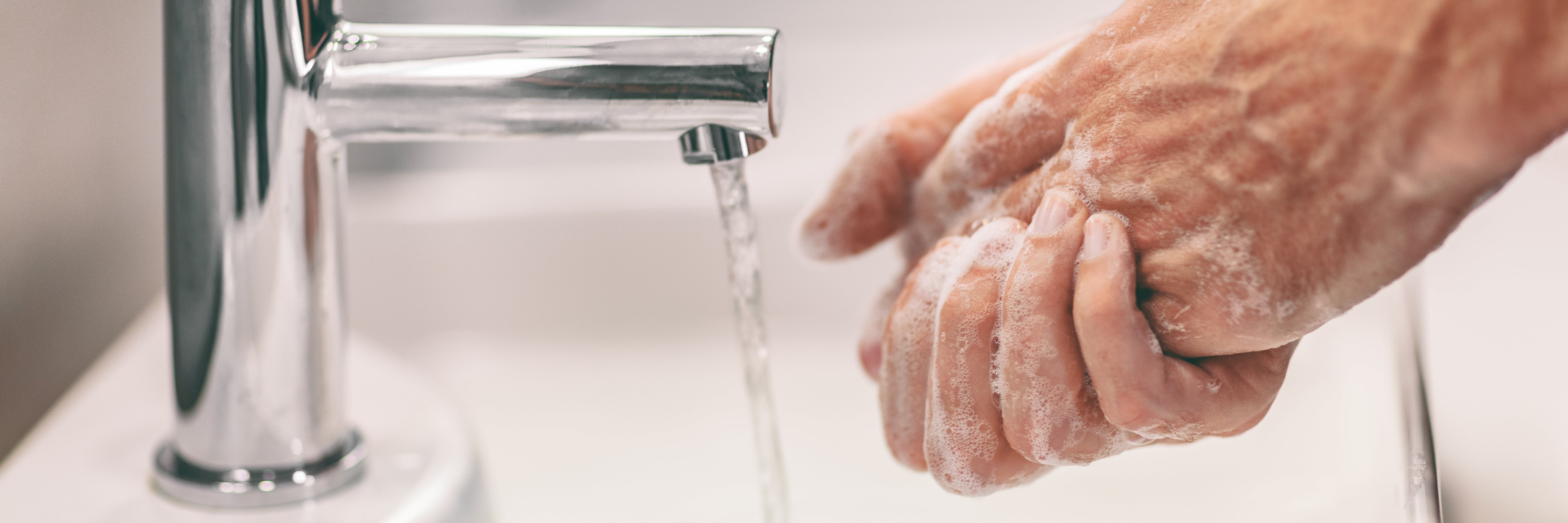
Practical Applications for Enhancing Hygiene in Long-Term Care: A Multidepartmental Approach to Infection Prevention
During the COVID-19 pandemic, long-term care facilities (LTCFs) showed a concerning increase in healthcare associated infections (HAIs). The unique needs of residents in LTCFs make them highly vulnerable to infection. Risk factors commonly seen in LTCFs include age, underlying chronic conditions or diseases, cognitive decline or impaired mental status, or indwelling devices such as foley catheters. These are merely a sample of the risk factors that cause this population to be so vulnerable.
According to the Centers for Disease Control and Prevention (CDC), each day, 1 in 43 nursing home residents contracts an HAI.1 In 2023, Pennsylvania alone saw an 18.6% increase in HAIs in LTCFs from 2022.2 Respiratory tract infections were the most frequently reported infection type in Pennsylvania in 2020, but skin and soft tissue infections were most frequently reported in 2021 through 2023.2 To further complicate a delicate situation, many of these HAIs are caused by multidrug resistant organisms, limiting treatment or prevention options.3
While HAI prevention might seem daunting, LTCFs have a duty to develop an infection control and prevention program. A committee that tracks the facility's progress regarding HAIs and designs programs to mitigate this risk is a first step to ensure that HAIs are monitored and addressed appropriately.
Prioritizing staff education as a preventative measure is also crucial. All nursing and clinical providers should receive regular and updated training on appropriate antibiotic usage, informed personal protective equipment and the situations that require it, hand hygiene importance, and disinfectant use and storage.
The prevalence of HAIs in LTCFs underscores the critical need for comprehensive and consistently applied hygiene practices. Far from being solely a nursing responsibility, each department within a long-term care setting has a unique opportunity to contribute to a culture of robust infection prevention. By integrating hygiene into daily routines and ensuring accessibility to essential supplies, facilities can significantly enhance resident and staff well-being.
Here are several practical applications to achieve this goal:
-
Integrate Hand Hygiene Across All Departments
A facility-wide commitment to hand hygiene is paramount. This surpasses standard protocols and seeks to embed handwashing into the fabric of daily operations:- Physical Therapy as a Cognitive and Hand Exercise: Physical therapy sessions offer an excellent, natural opportunity to reinforce hand hygiene. Therapists can encourage residents to wash their hands at the beginning or end of each session, framing it as a cognitive exercise (e.g., remembering the steps of handwashing) or a fine motor skill activity, thereby making hygiene an engaging and beneficial part of patient rehabilitation.
- Activities as a Pathway to Personal Care: The Activities department can creatively incorporate personal hygiene into its programming. Offering manicures or hand massages, perhaps with essential oils for a sensory experience, not only promotes clean hands and nails but also provides a therapeutic and enjoyable activity for residents, enhancing their overall well-being.
- Dining Services: Before-Meal Hand Cleansing Rituals: The Dining department can implement a consistent and comforting before-meal hand hygiene routine. Offering warm, wet cloths (which can be infused with mild, pleasant scents for a sensory benefit, as previously noted) to residents before meals provides a dignified and effective way to cleanse hands.
-
Optimize Accessibility to Hand Hygiene Resources
Facilities should ensure that hand hygiene supplies are readily available to both residents and staff:- Strategic Placement of Sanitizer and Soap: Hand sanitizer dispensers and handwashing stations with soap should be strategically located in high-traffic areas, such as dining areas and activity rooms; and close to resident rooms. This accessibility ensures that staff and residents aren't tempted to skip hand hygiene due to inconvenience. Regular checks should be conducted to ensure the dispensers are full and soap is always available.
-
Implement Rigorous Skin Integrity Checks
Preventing skin-related infections requires vigilant observation and documentation, particularly during routine personal care:- Nurse and CNA-Led Skin Assessments During Showers: During showers or other bathing routines, nursing staff should be trained and empowered to inspect residents' skin for any signs of redness, breakdown, rashes, or other anomalies. Staff should be encouraged to document these checks to ensure interventions are established as soon as possible for potential concerns. This proactive approach is crucial in preventing minor skin issues from escalating into serious infections.
By adopting these practical applications, LTCFs can cultivate an environment where hygiene is a shared responsibility, seamlessly integrated into daily life, and ultimately leading to a healthier and safer setting for all.
References
- Centers for Disease Control and Prevention. Current HAI Progress Report: 2023 National and State Healthcare-Associated Infections Progress Report. November 25, 2024. Accessed July 31, 2025. https://www.cdc.gov/healthcare-associated-infections/php/data/progress-report.html
- Kepner S, Bennett A, Jones R. Long-term care healthcare-associated infections in 2023: an analysis of 23,970 reports. Patient Safety. 2024;6(1). doi: 10.33940/001c.116555
- Centers for Disease Control and Prevention. Background: Management of Multidrug-Resistant Organisms in Healthcare Settings (2006). April 12, 2024. Accessed July 31, 2025. https://www.cdc.gov/infection-control/hcp/mdro-management/background.html
